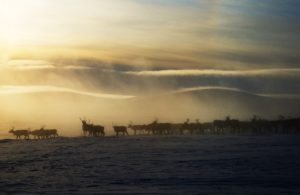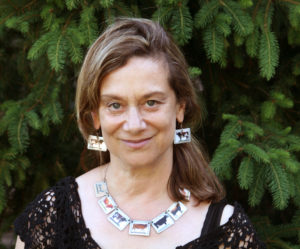 Written by Judith D. Schwartz
Written by Judith D. Schwartz
Published by Chelsea Green Publishing, 2020
Reviewed by Margot Taylor, RLA
You’ve got to love people who can find, understand, and interpret patterns and relationships. Judith Schwartz is this type of person as I’ve learned reading her new book, The Reindeer Chronicles. Judith’s book lays out an ecological rehabilitation process for our broken ecosystems, communities, and financial foundations. Also, she shows us how the power of inspiration can lift the human spirit, open the heart, and restore our American “can do” attitude.
In The Reindeer Chronicles, we meet the mover and shakers, and the thinkers and doers of the global landscape restoration movement. Each chooses to model nature in their restoration strategies and understands that “ecological function is all about place.” I found the book to be a celebration of some of my heroes, John Todd, Bill Mollison, Allan Savory, Paul Stamets, and Geoff Lawton. The book also introduces me to a new set of heroes, John Liu, Jeff Goebel, Milan Milan, and the indigenous peoples of Hawaii. Through interviews and first-person encounters, Judith tells the stories of people and places around the globe. We learn of people’s work, successes, and plights, which may be accomplished or pending as they strive to change some land-based practice for the betterment of all.

Reindeer at sunrise in winter, Sweden. Photo by Sara Nordangard
As Judith reveals, the eco-restoration process is more than just about the land. It is a process that involves the interconnected workings of the environment, the economy, and society with the added piece “inspiration.” The book’s underlying theme: To restore environmental health we need to embrace the attitude of “abundance not scarcity.”
Judith is an engaging and skilled storyteller. She nimbly maneuvers between character descriptions and complex facts and processes for each case study she presents. She brings her subjects and their work to life.
As a teaser, let me spotlight a few highlights from the book. I was first introduced to Allan Savory’s work while taking my Permaculture Design Course (PDC) in Australia. Allan speaks of the role of grazing animals in maintaining ecological function. As I write this review, California burns. The process Allan’s Foundation preaches is the use of grazing animals to suppress combustible fuel build-up at the ground level. But of course, we humans have removed these foragers by overharvesting and “good land conservation” rules.
Another subject, Jeff Goebel teaches how to build consensus. A skill needed by every human, all sides. We need to learn how to work together as this is the definition of a “functioning” ecosystem. I plan to attend Jeff’s training workshops as I need consensus building skills for the work I do.

Author Judith Schwartz. Photo by Tony Eprile
Milan Milan’s work on interpreting weather data and patterns is the evidence we need to clearly show the “naysayers” that YES we humans are causing the global climate problems. Milan’s work demonstrates how the change in global weather patterns is caused by human land use activities and directly results in the diminishment of freshwater supplies.
Bill Mollison, the father of Permaculture, is beaming somewhere! And then there is the sage-like beliefs of the indigenous Hawaiians. After I read this part of the book and heard the words of different native Hawaiians, I reached out to a friend to ask, “Want to go to Hawaii for Xmas this year?” This was my cry to connect with like-minded, open-hearted souls grounded in the love of the earth, and immense power of forgiveness. My soul needs rejuvenation. A reconnection to what matters, inside and out.
My takeaway is “belief systems result in behavior.” If we believe that our actions have caused the degradation of our environmental conditions, we can take ownership of this truth and ask, “Then how can we turn things around?” With no images in the book, I chose to lean on YouTube to source films on the stories and people Judith introduced. John Liu’s work is all about storytelling through film. How else can someone comprehend the immense success of restoring the Loess Plateau? Seeing is the most powerful tool in building believers.
The Reindeer Chronicles is a resource of eco-restoration pioneers, methods, and dreams. I encourage all to indulge in some quality learning about those who are trying to make a positive change. Pick up a copy of Judith’s book today, and discover the inspiration within.
About the Reviewer
Margot Taylor, RLA PA & DE, utilizes her 35+ years of experience in landscape architecture, natural resource conservation, and environmental education to design and manage an array of landscape projects. Her expertise includes reforestation of riparian habitats, soil and vegetation conservation, and stormwater management. She is an adjunct professor at the Williamson College of the Trades, Horticulture Shop teaching landscape design and graphics. She is the owner of Principal Land Ethics.

 Written by Judith D. Schwartz
Written by Judith D. Schwartz